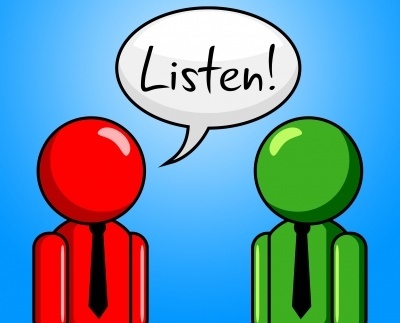Active Listening and Communication
/Listening is a critical part of communication. It is an activity many people take for granted yet perform quite poorly. Active listening can help greatly improve your communication with others.
It is very easy to “hear” but can be very difficult to actually “listen”.
Have you ever found yourself planning a response to someone before they even finished speaking?
Has listening just become a game of waiting for the time for when someone stops speaking so that you can start talking yourself?
This is where active listening can be improve your communication abilities.
Stephen R. Covey, author of “The 7 Habits of Highly Effective People: Powerful Lessons in Personal Change”, wisely said:
“Most people do not listen with the intent to understand; they listen with the intent to reply.”
Although low-stakes communication do not always call for the use of deep listening skills, most interactions between two people do require active and strong listening skills, especially those in the business environment.
When there is a lack of good listening, communication is often misinterpreted, resulting in errors, omissions and poor decision-making.
Poor listening can also lead to interpersonal conflict, especially if the person speaking can see that the other party is not paying close attention.
Clues that the other party is not paying attention:
Body language - Not looking someone in the eye, daydreaming, etc.
Lack of feedback – Questions not answered, silences in the conversation, etc.
Obvious distraction – Looking at your computer/smart phone, keyboard typing noises when on a conference call, reviewing other materials, etc.
Active listening is a crucial component to good communication. It also reduces the chances of inter-personal conflict and improves the speed and accuracy of decision making.
Luckily, there are specific skills and approaches you can learn to be a better and more active listener.
Ways to increase your active listening skills:
Listen with Curiosity – It is not always so much about adopting a new technique or changing what you say. Sometimes, it is more about adopting an attitude of curiosity about the other person and their situation. Have they come to a new or unique way of seeing the situation? How did they reach their current viewpoint? Listening to a new or unique viewpoint can sometimes shift your own way of thinking.
Active Listening isn’t always Silent Listening – Ask open-ended and thoughtful questions to encourage conversation. Understand that when you hear silence, it may be because the other person may feel like they have never been listened to in the past. Learn to ask affirming questions such as “Did I get that right?” and “Am I stating your idea correctly?” These are non-judgmental phrases that can help to clarify your understanding of a position.
Be Present and Focused – Make eye contact. Lean in. Give your undivided attention. No texting, emails, or laptop use please! No multi-tasking if you are participating on a conference call or Webex or video conference. Someone has asked for your time – give it to them wholly!
Develop Patience – This can be tough, especially with long meetings or topics or less-then-riveting content. But the payoff for your focus and attention is significant. You can end-up wasting more time by not paying attention since you may need to repeat the meeting or end-up with nothing decided. Power-through the meeting, giving it your all, and you end up with better decisions and less conflict.
Have Empathy – Try to understand the other person’s point of view. What if you traded places with them? How would your view of the situation change? What are the challenges and issues the other person is facing due to their function, position, resources, or limitations? By placing yourself “in their shoes”, you can be more understanding of their situation and position.
Listen without Judgment – Your first job is to “listen to understand”. Avoid evaluating, judging, or analyzing until all the information is presented and they have made their fullbusiness case. They may have a section that addresses your potential concerns. When it is your turn to present, you are more likely to receive the same good listening skills that you displayed.
Build Respect – Listening to what someone else has to say is one of the most sincere forms of personal and professional respect. This is a way to honor and improve your relationships with others through respectful listening.
So listen with curiosity, activity, presence, focus, patience, empathy, respect and without judgment. You will improve your communication with others and reduce the potential for conflicts.
You also help make more effective use of everyone’s limited time and you reach faster and better decisions.
Ram Dass, the Yogi and author of the seminal inspirational book “Be Here Now”, once said very succinctly:
“The quieter you become, the more you can hear.”
So, what does this have to do with Email Overload?
Communication is a critical component of Email communication, with each message having a sender and a receiver.
Emails are often made ambiguous by the sender, caused by messages without a clear message or being poorly organized.
But sometimes, the recipient not gleaning the true intent of the message.
Try not to just read only the overt words of the message, but also study the underlying meaning, which is often hidden in the subtler phrases or tone.
















